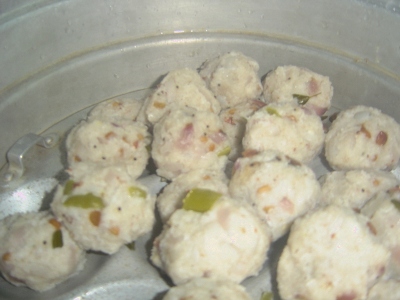கருங்குருவை:
விரண தோல் நோய்களையும், குறிப்பிட்ட விஷத்தையும் போக்கும். யோக சக்தியையும் தரும்.
மாப்பிள்ளை சம்பா:
இது புரதம், நார், தாது, உப்புச்சத்து நிறைந்தது. இதன் நீராகாரத்தை சாப்பிட்டால் நரம்புகள் வலுப்படும். ஆண்மைத் தன்மை அதிகரிக்கும்
கைகுத்தல் புழுங்கல் அரிசி:
low glycemic தன்மை கொண்டது. அது இரத்ததில், சர்க்கரை அளவினை மெதுவாக ஏற்றி சர்க்கரை
நோயாளிக்கு திடீர் சர்க்கரை உயர்வைத் (hyper glycemia) தடுக்கும்.குழந்தைகள், வாத இருப்பவர்கள், அரும்பத்தியம் இருப்பவர்களுக்கு உதவும்.
காட்டுயானம்:
ஆன்டி ஆக்ஸிடென்ட் குணங்களால் இதய வியாதிகளுக்கு அற்புதமான மருந்தாகும் டைப் 2 சக்கரை வியாதி நோயாளிகளுக்கு உகந்தது.
அன்னமழகி:
மிகவும் இனிப்பு சுவையுள்ள அன்னமழகி அரிசி சகல சுரங்களையும், பித்த வெப்பத்தையும் போக்க கூடியது. உடலுக்கு சுகத்தை கொடுக்கும்.
இலுப்பைப் பூச்சம்பா:
பித்தத்தினால் விளையும் சிற்சில ரோகம், சிரஸ்தாபம், உபசர்க்கதாகம், உஷ்ணம் ஆகியவற்றை உண்டாக்கும்.
கல்லுண்டைச்சம்பா:
இதை உண்பவர்களுக்கு மல்யுத்தக்காரரும் எதிர்க்க இயலாத தோள் வலிமையை தரும். மிகுந்த வார்த்தை வளமும் உண்டாக்கும்.
காடைச்சம்பா:
இந்த அரிசி பிரமேக சுரமும், குறிப்பிட்ட நோய்களையும் நீக்கும். விந்து விருத்தியும், அதிக பலமும் உண்டாகும்.
காளான் சம்பா:
உடலுக்கு மலை போன்ற உறுதியையும், சுகத்தையும் தரும். சில வாத ரோகத்தையும் குறைக்கும்.
கிச்சிலிச்சம்பா:
பலம், உற்சாகம், உடல் பளபளப்பு ஆகியவற்றை உண்டாக்கும். தேறாத உடல் தேறும்.
குறுஞ்சம்பா:
பித்தம், கரப்பான் நீங்க விந்து விருத்தியை உண்டாக்கும். வாத நோயைநீக்கும்.
கைவரை சம்பா:
உடலுக்கு அதிக வலிமையும், சுகமும் உண்டாக்கும். இதில் சிறிது பித்தமும் அதிகரிக்கும்.
சீதாபோகம்:
சீதாபோகம்:
உடல் பலம், தேக பளபளப்பு, விந்து விருத்தி உண்டாகும். அஜீரணத்தை குறைக்கும்.
புழுகுச்சம்பா:
இந்த அரிசியை உண்பவர்களுக்கு வனப்பும், அமைதியும், பசியையும், பலமும் உண்டாக்கும். தாகம் நீங்கும்.
மணக்கத்தை:
தோல் நோய்கள் அனைத்தையும் போக்கும். புண்கள், ரணங்கள் ஆகியவற்றை குறைக்கும்.
மணிச்சம்பா:
அளவுக்கு அதிகமாக சிறுநீரை குறைக்கும். குழந்தை, முதியவர்களுக்கு அதிகசுகத்தை உண்டாக்கும்.
மல்லிகை சம்பா:
நாவிற்கு மிகவும் ருசியானது. தேகத்திற்கு சுகத்தையும், உறுதியையும் தரும்.கரப்பான், பிரமோகம், உடல் வெப்பம் ஆகியவற்றை போக்கும்.
மிளகு சம்பா:
உடலுக்கு சுகத்தை தரும். பசியை உண்டாக்கும். வாதம் போன்ற பல விதமான ரோகத்தை போக்கும்.
மைச்சம்பா:
வாதம், பித்தம் போன்ற கோளாறுகளை குறைக்கும். வாத கோபம்,வாந்தி போன்றவற்றை போக்கும்.
வளைத்தடிச்சம்பா:
வாத, பித்த தொந்தரவு, வயிற்று உப்புசம், வயிற்று இரைச்சல், கரப்பான் ஆகியவற்றை ஏற்படுத்த வாய்ப்பு அதிகம்.
வாலான் அரிசி:
மந்தம், தளர்ச்சி முதலியவை குறையும். உடலுக்கு அழகும், கொழுமையும் உண்டாக்கும்.
மூங்கில் அரிசி:
மூங்கில் மரங்கள் 40 வருடங்களுக்கு ஒரு முறை தான் பூக்கும். இந்த பூவிலிருந்து வரும் காய்கள் தான் நெல், அதாவது மூங்கில் நெல் என்கிறார்கள்.மூங்கிலிலிருந்து பெறப்படும் மூங்கிலரிசியைச் சமைத்து உண்டு வர, உடல் திடம் உண்டாகும், உடல் இறுகும், கொடிய நோய்களெல்லாம் நெடுந்தூரம் ஓடிவிடும்.
பழைய அரிசி:
பாலர், முதியோர்களுக்கு மிகவும் உகந்தது. பசியும், உடலுக்கு குளிர்ச்சியும் உண்டாகும். சில நோயும்,கபமும் குறையும்.
















